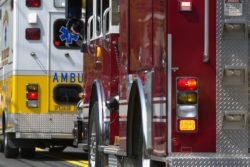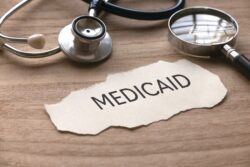What is Narcan?

Narcan is part of a class of pharmaceuticals known as opioid antagonists. Opioid antagonists like Narcan block the effects of pain-relieving and highly addictive drugs such as heroin, morphine, and oxycodone.
While physicians may prescribe Narcan (brand name for naloxone) proactively with opioids to minimize the risk of chemical dependency, the drug is used most frequently in emergency situations. Many may be familiar with Narcan, as it was reportedly administered to Demi Lovato when the singer overdosed in summer 2018.
In 2018, the U.S. Surgeon General issued an advisory encouraging more people to carry Narcan to reduce overdose fatalities associated with the opioid epidemic. In response to the Surgeon General’s advisory, it’s important to be well informed about what Narcan is and how it’s used.
What is Narcan Used For?
When administered quickly and properly, Narcan is used to counteract the effects of opioids taken in life-threatening quantities. Opioids stimulate receptors in the brain that create euphoria and build tolerance with repeated use; consequently, many opioid users steadily increase their dosages to achieve the same pleasurable feelings.
Signs of an opioid overdose can include any combination of the following:
- Unusual sleepiness or unresponsiveness to touch or voice
- Irregular, slow or absent respiration
- Slow pulse and low blood pressure
- Blue or purple fingernails and lips
- Reduced pupil size, known as “pinpoint pupils”
Narcan is successful only in treating the symptoms of an opioid overdose. When administered to someone who has not taken opioids, Narcan will have no effect.
How is Narcan Given?
Available nationwide via legal prescription and over the counter in 36 U.S. states, Narcan can be administered by healthcare professionals as well as people trained to give the drug in critical situations. While doctors may inject Narcan directly into veins or muscles, others use it outside the hospital or office settings in the form of a nasal spray.
Many first responders—emergency medical technicians, firefighters, paramedics, and police—receive instruction on Narcan use and carry the drug for use in emergencies. People who work with and care about those with opioid addiction can also be trained on the use of Narcan, which cannot be self-administered by someone experiencing an overdose.
What Does Narcan Do?
When administered quickly after an opioid overdose, Narcan prevents the body’s mu, delta, and kappa receptors from forming attachments with opioids, which arrest the brain and nervous system in the following ways:
- Brainstem: In addition to slowing involuntary respiration to dangerous rates, opioids minimize feelings of pain and stop coughing.
- Limbic system: Opioids stimulate feelings of contentment, pleasure, and relaxation in this emotional control center.
- Spinal cord: The spinal cord’s ability to send painful sensations to the brain is hindered through opioid use.
To restore and maintain Narcan’s life-saving effects, multiple doses may be required until emergency care professionals arrive.
What are the Side Effects?
While Narcan can prevent fatalities, its effects are unpleasant for those receiving it. Since Narcan blocks opioids from attaching to brain receptors, its use results in immediate and often severe opioid withdrawal symptoms such as nausea, vomiting, body aches, and fever. Fortunately, however, Narcan is not addictive and does not exacerbate a person’s chemical dependency.
While Narcan has life-saving effects immediately following opioid overdose, the drug is not a substitute for addiction treatment, which involves a combination of therapies and approaches sustained over time. Pyramid Healthcare provides expert care and support at any stage of addiction recovery, including recovery from opioid addiction.
Narcan is part of a class of pharmaceuticals known as opioid antagonists. Opioid antagonists like Narcan block the effects of pain-relieving and highly addictive drugs such as heroin, morphine, and oxycodone.
While physicians may prescribe Narcan (brand name for naloxone) proactively with opioids to minimize the risk of chemical dependency, the drug is used most frequently in emergency situations. Many may be familiar with Narcan, as it was reportedly administered to Demi Lovato when the singer overdosed in summer 2018.
In 2018, the U.S. Surgeon General issued an advisory encouraging more people to carry Narcan to reduce overdose fatalities associated with the opioid epidemic. In response to the Surgeon General’s advisory, it’s important to be well informed about what Narcan is and how it’s used.
What is Narcan Used For?
When administered quickly and properly, Narcan is used to counteract the effects of opioids taken in life-threatening quantities. Opioids stimulate receptors in the brain that create euphoria and build tolerance with repeated use; consequently, many opioid users steadily increase their dosages to achieve the same pleasurable feelings.
Signs of an opioid overdose can include any combination of the following:
- Unusual sleepiness or unresponsiveness to touch or voice
- Irregular, slow or absent respiration
- Slow pulse and low blood pressure
- Blue or purple fingernails and lips
- Reduced pupil size, known as “pinpoint pupils”
Narcan is successful only in treating the symptoms of an opioid overdose. When administered to someone who has not taken opioids, Narcan will have no effect.
How is Narcan Given?
Available nationwide via legal prescription and over the counter in 36 U.S. states, Narcan can be administered by healthcare professionals as well as people trained to give the drug in critical situations. While doctors may inject Narcan directly into veins or muscles, others use it outside the hospital or office settings in the form of a nasal spray.
Many first responders—emergency medical technicians, firefighters, paramedics, and police—receive instruction on Narcan use and carry the drug for use in emergencies. People who work with and care about those with opioid addiction can also be trained on the use of Narcan, which cannot be self-administered by someone experiencing an overdose.
What Does Narcan Do?
When administered quickly after an opioid overdose, Narcan prevents the body’s mu, delta, and kappa receptors from forming attachments with opioids, which arrest the brain and nervous system in the following ways:
- Brainstem: In addition to slowing involuntary respiration to dangerous rates, opioids minimize feelings of pain and stop coughing.
- Limbic system: Opioids stimulate feelings of contentment, pleasure, and relaxation in this emotional control center.
- Spinal cord: The spinal cord’s ability to send painful sensations to the brain is hindered through opioid use.
To restore and maintain Narcan’s life-saving effects, multiple doses may be required until emergency care professionals arrive.
What are the Side Effects?
While Narcan can prevent fatalities, its effects are unpleasant for those receiving it. Since Narcan blocks opioids from attaching to brain receptors, its use results in immediate and often severe opioid withdrawal symptoms such as nausea, vomiting, body aches, and fever. Fortunately, however, Narcan is not addictive and does not exacerbate a person’s chemical dependency.
While Narcan has life-saving effects immediately following opioid overdose, the drug is not a substitute for addiction treatment, which involves a combination of therapies and approaches sustained over time. Pyramid Healthcare provides expert care and support at any stage of addiction recovery, including recovery from opioid addiction.







